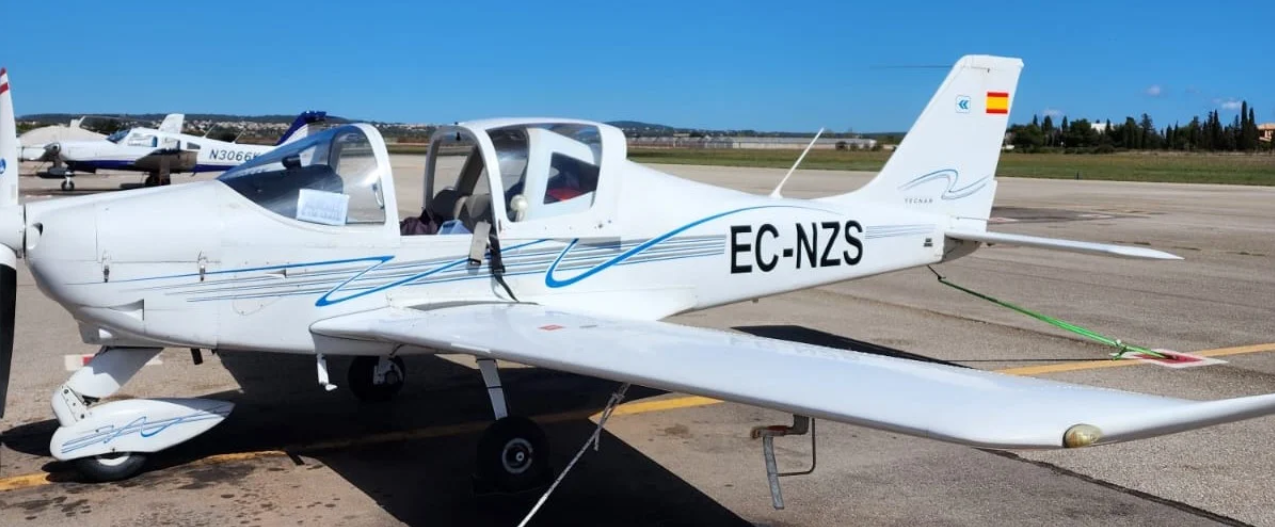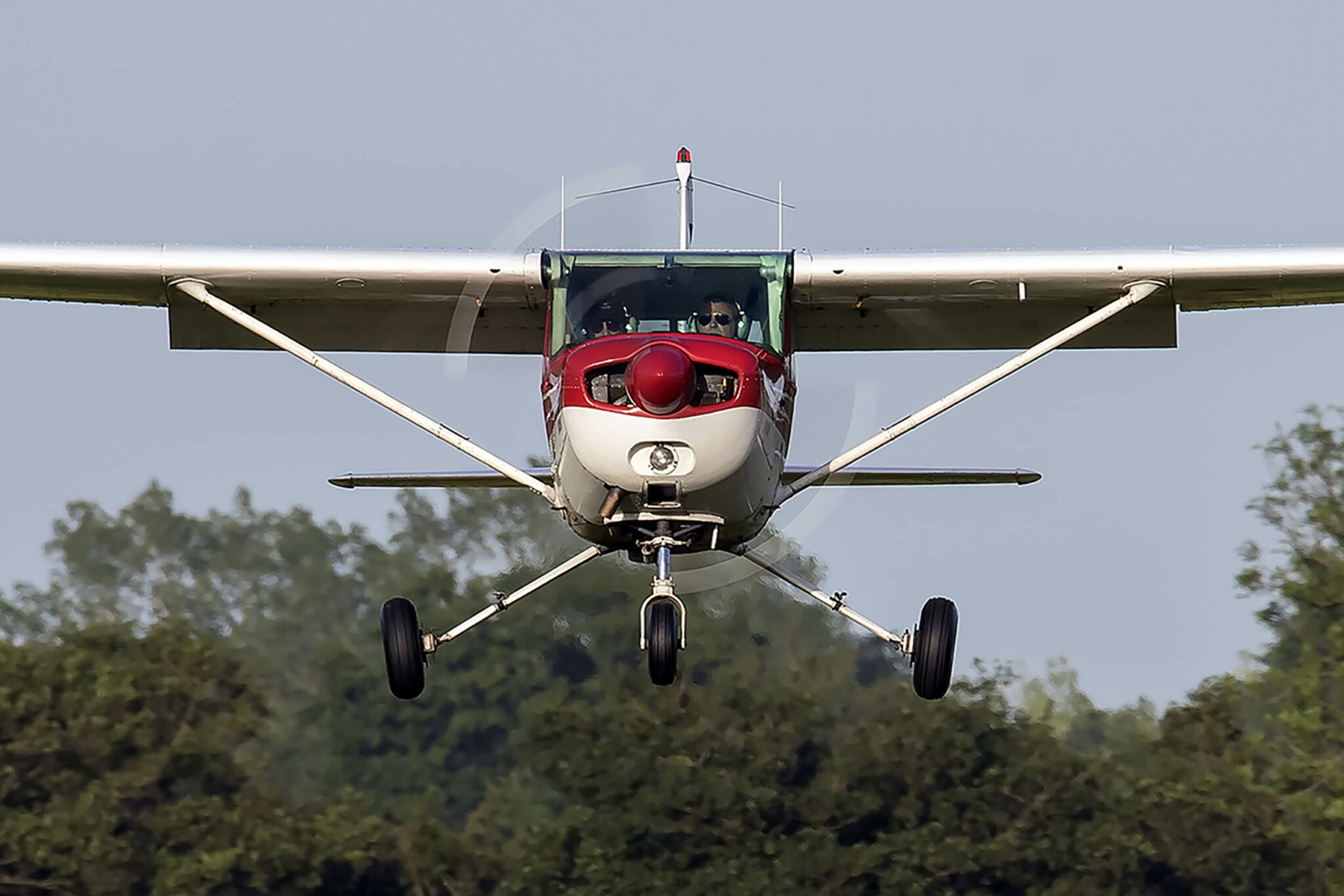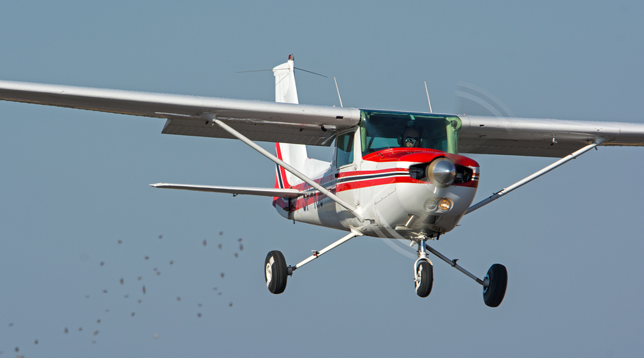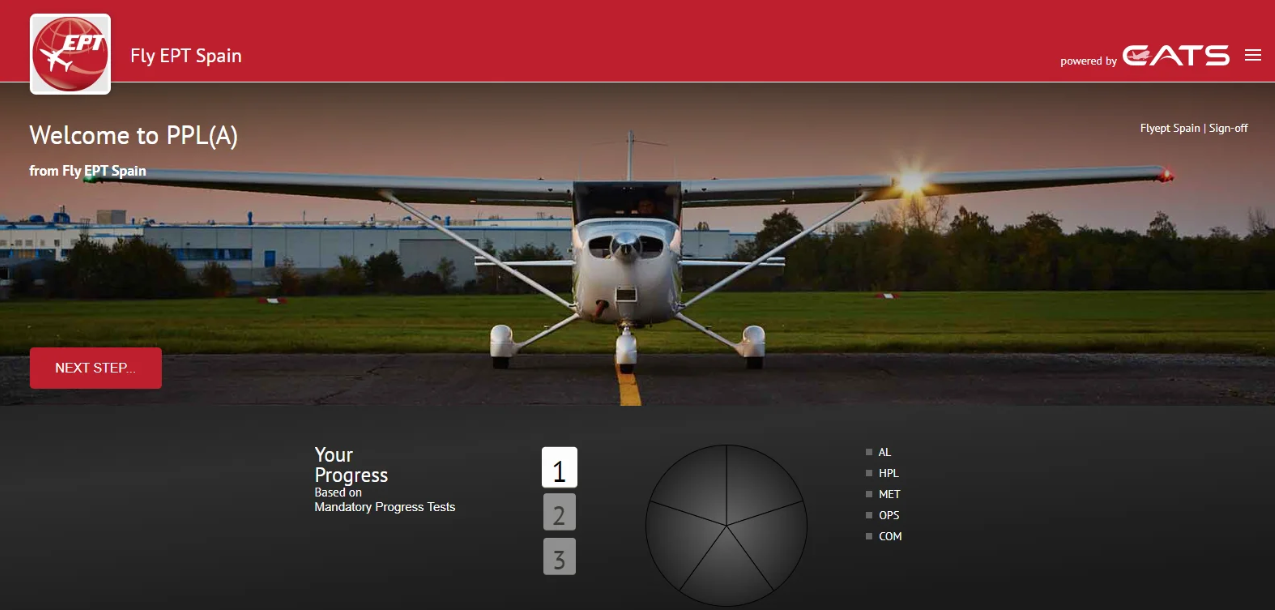EASA LAPL(A) Course
EASA Light Aircraft Pilot License (LAPL)

Price: €4,998 EUR for 30 hours flight training
If you would like to start your LAPL(A) course, complete this Pilot Registration Form
The difference between a LAPL and a PPL, and how to upgrade a LAPL to a PPL, is fully explained here
How to convert an EASA LAPL to a UK CAA LAPL is explained here
LAPL Flight Training Course
Fly EPT Spain delivers the EASA LAPL(A) course at: Son Bonet Airport (LESB), Palma de Mallorca, Spain
Entry requirements
- Minimum age: 17 years old for licence issue; however, you can log flight time from age 14, start the LAPL aged 15, and fly solo from age 16
- Must hold a Part-Med LAPL Medical Certificate, issued by your GP Doctor
LAPL(A) Training
The training for a Light Aircraft Pilot Licence (LAPL) is very similar to the PPL, except the training is shorter with only 30 hours flight training, as opposed to 45 hours for the PPL. The theoretical course, however, is identical to the PPL with exactly the same examinations to sit. So if you choose to later upgrade your LAPL to a PPL, the exams will carry over.
The LAPL training includes:
- 100 hours theoretical 'online' self-study covering nine (9) subjects. Note: The LAPL and PPL theory course are identical. Full details here
- Minimum 30 hours practical flight training
- 15 hours of dual flight instruction
- 1 hour dual instrument flying
- 6 hours of supervised solo flight time, including at least 3 hours of solo cross-country flight time
- At least 1 cross country flight of at least 150 KM (80 NM) that includes a full stop landing at one (1) aerodrome different from the departure aerodrome.
- Nine (9) written theoretical exams with Austro Control GmbH
Note: The LAPL does NOT require a language proficiency test, as a practical Radio-Telephony (RT) examination is not mandatory. However, you can add a Flight Radio Telephony Operators Licence to your LAPL.
LAPL Privileges
The privileges of the holder of a LAPL for aeroplanes is to:
- act as Pilot in Command (PIC) on EASA+UK registered single-engine piston (SEP) light aircraft (land)(sea) or Touring Motor Glider (TMG) with a Maximum certificated Takeoff Weight (MTOW) < 2,000 kg or less
- fly by day in Visual Flight Rules (VFR) i.e. in good weather, and by Night if a Night rating is held
- after licence issue, and after a further 10 hours of flying, carry a maximum of 3 passengers without payment (cost sharing is ok)
- Can add additional ratings: Night + Aerobatics
- fly EASA + UK registered aircraft only within European/UK FIR airspace. The LAPL licence is accepted throughout Europe (EASA + UK), but is NOT recognised outside the UK and European Union member states
Note: The LAPL(A) does NOT fully comply with the ICAO standards for aeroplane pilot licensing contained in the ICAO Annex 1 'Personnel Licensing' and is therefore NOT recognised outside Europe
The LAPL is available for aircraft categories:
- Aeroplanes
- Helicopters
- Sailplanes (gliders)
- Balloons
Extension of Privileges to another Class or Variant of aeroplane
A 'class' rating (e.g. SEP(land) is an allowance to fly a certain group of aircraft that require training common to all aircraft within the group. If you want to include a different aircraft category to your LAPL for which you do not already hold the privileges to fly, you will be credited for the common subjects but not the category-specific ones. These will need to be taken and passed for the aircraft. For example, if you wish to extend a LAPL(A) to include an additional class, for e.g. SEP (up to 2000 kg), TMG or SEP(sea), you will need to complete the following:
(a) The privileges of an LAPL(A) shall be limited to the class and variant of aeroplanes or TMG in which the skill test was taken. This limitation may be removed when the pilot has completed in another class the requirements below:
(1) 3 hours of flight instruction, including:
(i) 10 dual take-offs and landings
(ii) 10 supervised solo take-offs and landings
(2) a skill test to demonstrate an adequate level of practical skill in the new class. During this skill test, the applicant shall also demonstrate to the examiner an adequate level of theoretical knowledge for the other class in the following subjects:
(i) Operational procedures
(ii) Flight performance and planning
(iii) Aircraft General Knowledge
(b) In order to extend the privileges to another variant within a class (e.g. SEP(sea) rating, retractable gear, tailwheel, EFIS etc.), the pilot shall either undertake differences training or do a familiarisation. The differences training shall be entered in the pilot’s logbook or into an equivalent record and be signed by the instructor.

LAPL Medical
You will need a Part-Med.A.030 LAPL Medical Certificate before first solo, essentially a Pilot Medical Declaration form that can be issued by an approved General Practitioner (GP) Doctor, which confirms you are 'Fit to Fly'
Note: The medical required for a LAPL is less stringent than that for a PPL which requires a minimum Class 2 Medical certificate issued by an Aero-Medical Examiner (AME)
Note: If you have any health concerns that may affect your ability to be issued with a LAPL Pilot Medical Certificate, you can check Sub-Part B, under Section 3 here
The LAPL ✈︎ General background
The LAPL was introduced to offer aspiring aviators the chance to gain a pilot licence with a shorter flight training syllabus and a less stringent medical examination than the PPL.
The LAPL is essentially a European 'hobby' pilot licence. It is purely for recreational use in Europe, and is NOT for aviators who wish to fly outside Europe, or plan to fly commercially, although the LAPL can easily be upgraded to a PPL.
While the LAPL is a bit more restrictive than the PPL, the LAPL is perfectly suited for pilots who only wish to fly any Light Sport Aircraft (LSA). The vast majority of single-engine piston (SEP) aircraft including Tecnam, Cessna, Piper, Diamond etc. are all accessible to a LAPL holder. The LAPL will allow you to fly yourself plus up to three (3) passengers (after 10 further flight hours after licence issue) in a Cessna 172 to France and back.
The LAPL can be an ideal alternative to the more stringent PPL, even to commercial pilot aspirants with limited annual leave days and limited finance, as it allows you to get flying faster, as the practical flying course is shorter and requires less time off work. You can hour build on a LAPL.
Additionally, the LAPL is easier and cheaper to maintain than a PPL which requires a proficiency check with an examiner every 2 years. The LAPL, however, only needs to be maintained by recency, and not by proficiency. See below for more details how to maintain a LAPL, as opposed to a PPL.
How can I upgrade my LAPL to PPL
The difference between a LAPL and a PPL and how to convert and upgrade a LAPL to a PPL is fully explained here
If down the road you later change your mind and decide you would like to pursue a Private (PPL), even a Commercial Pilot Licence (CPL), you can easily upgrade your LAPL to a PPL and the conversion course syllabus only requires a further 10 hours of supervised flight training with a flight school. After hour building on a LAPL, you should by this stage have reached a certain level of confidence and proficiency, so these 10 hours of supervised flight instruction can be flown in just over one (1) week which is the expected time taken to convert a LAPL to a PPL. The LAPL exams will carry over to PPL. There is no additional theoretical study. In addition to the 10 hours of supervised flight, you just need to upgrade your medical certificate to a Class 2 issued by an AME.

LAPL Skill Test
At the end of your training you will need to take a Skills Test in an aircraft. You will have to demonstrate to a flight examiner that while acting as pilot in command (PIC) you can competently carry out the procedures and manoeuvres taught during your training.
For general guidance, the following limits apply during the LAPL skill test, which are identical for the PPL. The examiner should make allowances for turbulent conditions and the handling qualities and performance of the aeroplane used: -
- Height:
- normal flight ± 150 ft - Heading or tracking of radio aids:
- normal flight ± 10° - Speed:
- take-off and approach +15/–5 knots
- all other flight regimes ± 15 knots
LAPL 'Online' Theoretical Knowledge Course
LAPL students need to complete a theoretical knowledge instruction course compromising 100 hours of theory, which we deliver online.
More details here
LAPL Theoretical Knowledge Examinations
As part of the application for a LAPL, you will need to sit and pass examinations in the following subject areas:
Common subjects
- Air law
- Human performance
- Meteorology
- Communications
- Navigation
Exams specific to the light aircraft category
- Principles of flight
- Operational procedures
- Flight performance and planning
- Aircraft general knowledge
These nine (9) theory exams for the LAPL(A) are identical to the PPL(A) examinations.
LAPL holders who later choose to upgrade to PPL will therefore receive full credit towards the PPL(A) exams. No further exams are required for the LAPL to PPL conversion.
FAQ ✈︎ LAPL
Can I receive any credit for any prior flying experience towards my LAPL course ?
Yes
Specific requirements for the LAPL(A) are contained in Easy Access Rules Regulation (EU) No 1178/2011; Annex 1, Part-FCL, Subpart B - Light Aircraft Pilot Licence, Section 2, here
How do I maintain the validity of my LAPL
LAPL recency requirements
The LAPL is valid for life.
Pilot’s do NOT need to revalidate or renew a LAPL, as its validity is maintained by recency requirements.
(a) Holders of a LAPL(A) shall exercise the privileges of their licence only if in the last 24 months (2 years), they have met any of the following conditions as pilots of aeroplanes or TMG's:
(1) Flown 12 hours of flight time as Pilot in Command (PIC), including:
- 12 take-offs and 12 landings;
- refresher training of at least one (1) hour of total flight time with an instructor
OR, if you do NOT meet these requirements
(2) Pass a LAPL(A) proficiency check with an examiner. The proficiency check syllabus shall be based on the skill test for the LAPL(A).
(b) If holders of a LAPL(A) hold both a SEP(land) and a SEP(sea) privilege, they may comply with the requirements in point (a)(1) in either class or a combination thereof which shall be valid for both privileges. For this purpose, at least 1 hour of the required flight time and 6 out of the required 12 take-offs and landings shall be completed in each class.
EASA Part FCL, FCL.140.A LAPL(A) — Recency requirements
Note: To keep your PPL valid you need to revalidate your Single Engine Piston (SEP) rating every 2 years. You will need to fly 12 hours in the last 12 months (1 year) including 6 hours as Pilot in Command (PIC). The 12 hours should also include 12 takeoffs and 12 landings.
You do NOT need to involve the competent authority to revalidate or renew your LAPL. Proof of your flight log in your log book is sufficient.

References:
EASA Subpart B of Annex I (Part-FCL) to Commission Regulation (EU) No 1178/2011
Standards Document 19(A): LAPL and PPL Skill Test (Aeroplanes) Policy and Guidance for Applicants and Examiners
